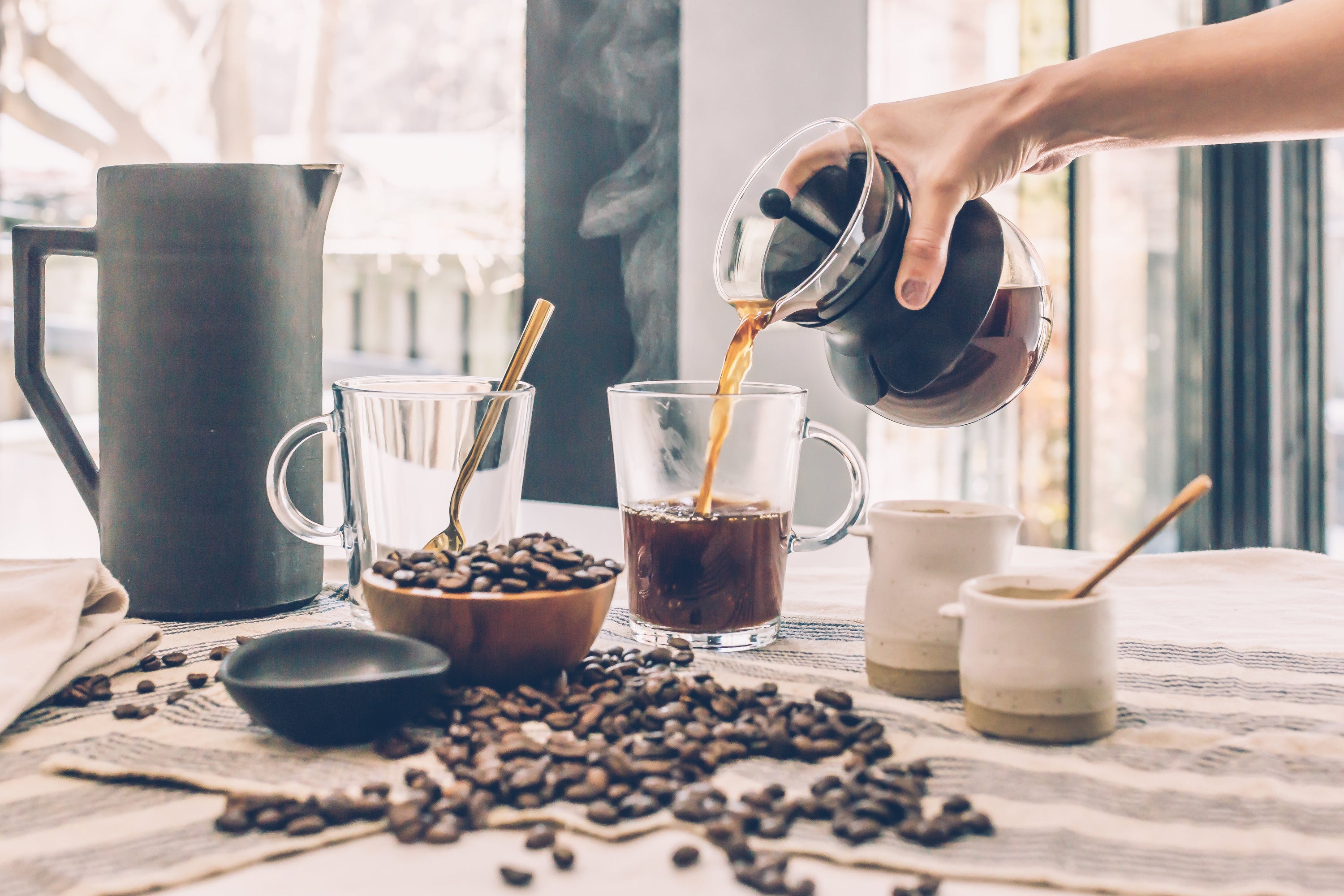
Arabica Coffee vs. Robusta - A Deeper Dive into Environmental and Farming Realities
by Coffee Analytica Team
·
Arabica coffee dominates global coffee culture, representing 60-70% of coffee production. Known for its nuanced flavours and delicate acidity, Arabica often overshadows its counterpart, Robusta. However, beyond the cup, growing Arabica presents unique challenges related to environmental sustainability, farming practices, and even economic impacts. This blog explores these aspects, offering insights into the real differences between growing Arabica and Robusta.
Climate and Terrain: Where Does Arabica Thrive?
Arabica coffee (Coffea arabica) is highly sensitive to its growing environment. It thrives at high altitudes and cooler temperatures, typically between 600 and 2,200 meters above sea level. This specific climate slows down the maturation of coffee cherries, allowing the beans to develop complex flavours.
Robusta's Resilience
- Robusta coffee (Coffea canephora) grows at lower altitudes, typically below 900 meters, and can withstand higher temperatures (20-30°C).
- Unlike Arabica, Robusta is less sensitive to climate changes, making it easier to grow in warmer regions, especially in low-lying areas.
Environmental Implication:
Arabica’s reliance on high-altitude regions makes it more vulnerable to climate change. Rising temperatures and unpredictable weather patterns threaten its production zones, pushing farmers to explore climate-resilient Robusta as an alternative.
Farming Practices: Arabica vs. Robusta
Arabica Farming: A Labour of Love
Arabica coffee is a labour-intensive crop. Farmers often grow Arabica on terraced hillsides to maximize exposure to sunlight while protecting plants from harsh winds.
- Harvesting: Arabica cherries are typically handpicked to ensure only the ripest cherries are collected. This process is labour-intensive but critical for maintaining quality.
- Disease Susceptibility: Arabica plants are more prone to diseases like coffee leaf rust (Hemileia vastatrix) and pests like the coffee berry borer. Combatting these threats often requires pesticides and more attentive care.
Robusta Farming: Resilient and Efficient
Robusta plants are heartier and produce higher yields per hectare.
- Harvesting: Robusta cherries are often strip-picked (both ripe and unripe cherries collected at once) or mechanically harvested, making the process faster and less labour-intensive.
- Disease Resistance: Robusta is naturally resistant to coffee leaf rust and other common diseases, reducing the need for chemical interventions.
Farmer's Perspective:
While Arabica commands higher prices in the specialty coffee market, its farming requires significantly more effort and risk. Robusta, on the other hand, offers a more stable income but lower market value.
Environmental Impact: Comparing Arabica and Robusta
Arabica’s growing conditions, combined with its susceptibility to diseases, have a distinct environmental footprint.
Water Use
- Arabica often relies on wet (washed) processing, which uses large amounts of water to remove the mucilage from coffee beans.
- Robusta, frequently processed using the dry (natural) method, is less water-intensive.
Deforestation
High-altitude Arabica farms sometimes lead to deforestation as farmers clear forests to plant coffee. This has a significant impact on biodiversity and carbon sequestration.
Robusta, grown in warmer and lower regions, may not contribute as heavily to deforestation but is more likely to be grown in monoculture systems, impacting soil health over time.
Climate Adaptability
Robusta’s ability to withstand higher temperatures makes it a better candidate for future-proof farming. Arabica, however, requires innovative solutions like shade-grown techniques or cross-breeding with Robusta to adapt to changing climates.
Farmer’s Experience: Challenges and Rewards
Arabica Farmers:
- Effort: Arabica requires meticulous care, from soil management to disease prevention.
- Rewards: Despite the challenges, Arabica offers higher prices, especially for specialty-grade beans.
- Risks: A single outbreak of coffee leaf rust can decimate an entire farm.
Robusta Farmers:
- Effort: Robusta is easier to grow and requires less labour for harvesting and processing.
- Rewards: While prices are lower, the stability of production provides a reliable income.
- Risks: Monoculture farming practices can degrade soil quality over time.
Comparison to Australia:
In Northern Queensland, Australian farms exclusively grow Arabica due to the region’s high altitudes and cooler temperatures. However, production remains niche compared to global giants like Brazil and Vietnam. Australian Arabica farms focus heavily on sustainability, often employing shade-growing and water-efficient techniques.
Arabica and Robusta in Australian Cafés
The overwhelming majority of Australian cafés use 100% Arabica beans. Here’s why:
- Taste Preference: Arabica’s smooth, fruity, and complex flavours align with the Australian palate, especially for drinks like flat whites and long blacks.
- Specialty Market: Australian café culture is deeply intertwined with specialty coffee, where Arabica dominates.
However, Robusta is not entirely absent. Some espresso blends incorporate a small percentage of Robusta to enhance crema and add body to the cup.
Debunking the Myths About Arabica and Robusta
"Is Your Coffee Arabica?"
For most Western coffee drinkers, the answer is almost always yes. Arabica is the default for specialty coffee, making this question more common among casual drinkers unfamiliar with coffee species.
Does Easy Access to Arabica Make It Less Special?
Not at all. While Arabica is abundant, its complexity and diversity ensure it remains the gold standard. Conversely, Robusta’s scarcity in specialty coffee is not due to higher quality but because of its more one-dimensional flavour profile.
Conclusion: Understanding Arabica Coffee
Arabica coffee is more than just a species - it’s the backbone of the global specialty coffee industry. From its delicate flavours to its challenging farming requirements, Arabica represents the dedication and expertise of millions of farmers worldwide.
However, understanding its counterpart, Robusta, is equally important, especially as climate change reshapes the coffee landscape. By appreciating the environmental, economic, and farming realities of both species, we can better understand the coffee we drink and support sustainable practices in the industry.
Next time someone asks, “Is your coffee Arabica?” - use it as an opportunity to share these insights. Educating others not only deepens their appreciation for coffee but also highlights the intricate work that goes into every cup.